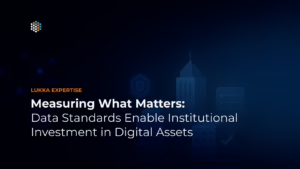
Author: Andrea S. Kramer, McDermott, Will & Emery
This material is for general information purposes only and should not be construed as legal advice or any other advice on any specific facts or circumstances. No one should act or refrain from acting based upon any information herein without seeking professional legal advice. McDermott Will & Emery makes no warranties, representations, or claims of any kind concerning the content herein. McDermott and Andrea S. Kramer expressly disclaim all liability to any person in respect of the consequences of anything done or not done in reliance upon the use of contents included herein. For a complete list of McDermott entities, visit mwe.com/legalnotices.
Taxpayers need to record and track the tax basis of each and every unit of virtual currency they hold in their wallet, account, or address to properly report taxable gain or loss each time they dispose of a unit or units. In general, the tax basis of property is its cost (expressed in U.S. dollars) paid to acquire the virtual currency, including any commissions, fees, and acquisition costs.1 This Memorandum addresses specific identification requirements for dispositions of convertible virtual currency. It starts from the IRS’s view that convertible virtual currency is property. For a discussion of the legal authority of IRS Notices and other pronouncements, see McDermott’s Memorandum, “The Legal Effect of IRS Pronouncements on Virtual Currency Taxation.”
IRS Notice 2014-21 and 2019 Frequently Questions (FAQs) set out the IRS’s views with respect to certain aspects of the taxation of convertible virtual currency.2 The IRS takes the position that virtual currency is property—not foreign currency—for federal tax purposes.3 As such, the IRS reasons, each separate coin, token, or unit (unit) of convertible virtual currency has its own tax basis.4 In addition, the tax basis of virtual currency received as payment for goods or services is treated as its fair market value as of the date of receipt.5 Tax character of gain or loss from disposing of virtual currency turns on whether the virtual currency is an ordinary or capital asset in the taxpayers hands.6 The IRS treats units and the person spending units have taxable gain or loss. 7
Why Tax Basis Is Important
Although tracking tax basis on a unit by unit basis might be burdensome for some taxpayers and some transactions, it provides taxpayers with an opportunity for significant tax benefits. Taxpayers can pick and choose which units they want to sell. They can select those units with the highest tax basis to minimize their current taxation and push gains into future tax years. Or, they can maximize current taxation by selling those units with the lowest tax basis.
Taxpayers who choose not to identify their units are subject to a default tax basis rule, meaning they will be taxed on the sale of their units on a first–in–first–out basis (FIFO).8
Average Cost Method Not Available
Taxpayers holding multiple units of a given virtual currency often acquire these units at different times and at different prices. If they sell a portion, but not all, of their units at any given time, they might want to use the average cost method to calculate their gains and losses. The average cost method is mandatory for partnership interests, foreign currency that is the taxpayer’s functional currency, and certain corporate transactions. It is elective for taxpayers who hold mutual fund shares. The average cost method allows, for example, electing taxpayers to calculate the value of their mutual fund positions on an aggregate basis to determine their profit or loss. Such electing taxpayers can determine their tax basis by taking the average cost of all of the shares they own in a particular fund and multiplying the average cost by the number of fund shares they are selling. The average cost method can be a simple way to handle mutual fund sales for taxpayers who reinvest their mutual fund dividends and regularly add to their mutual fund holdings.9 But no Treasury or IRS authority allows for the use of the average cost method for virtual currency.
Specifically Identifying Virtual Currency
According to the IRS Notice and FAQs, taxpayers have two ways to identify the basis of their specific units. First, taxpayers can document a specific unit’s unique digital identifier—such as a private key, public key, or address. Or, they can record all of the transaction information for the units in a single account, wallet, or address.10
To comply with specific identification, taxpayers must record the following information:
- the date and time each unit was acquired
- the basis and fair market value of each unit at the time acquired
- the date and time each unit was sold, exchanged, or otherwise disposed of
- the fair market value of each unit when disposed of
- the amount of money or the value of property received for each unit.11
By maintaining this information, taxpayers can dispose of high basis units first, minimizing their current tax and deferring taxable gains. Specific identification allows taxpayer complete flexibility in selecting the units they want to sell. In fact, taxpayers can replicate any of the possible basis tracking methods, changing their selection criteria as their tax objectives change.
With the tracking capabilities of blockchain and a technology and data service provider like Lukka, taxpayers can establish reliable systems to record their transactions and track their costs.
1 I.R.C. § 1012(a).
2 Notice 2014-21, 2014-16 I.R.B. 938, Q&A 7. 2019 Frequently Asked Questions on Virtual Currency Transactions, IR 2019-167, https://www.irs.gov/individuals/international-taxpayers/frequently-asked-questions-on-virtual-currency.
3 Notice 2014-21, Q&As 1 and 2.
4 Q&A 4.
5 Q&A 3.
6 Q&A 7.
7 Q&As 1 and 2.
8 FAQ, 40.
9 I.R.C.§ 1012(c)(1).
10 FAQ, 36 and 37
11 FAQ, 39.



